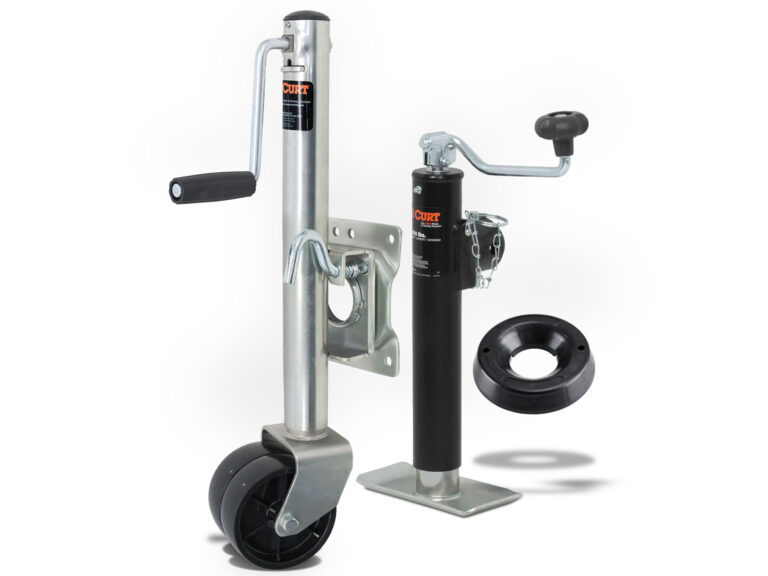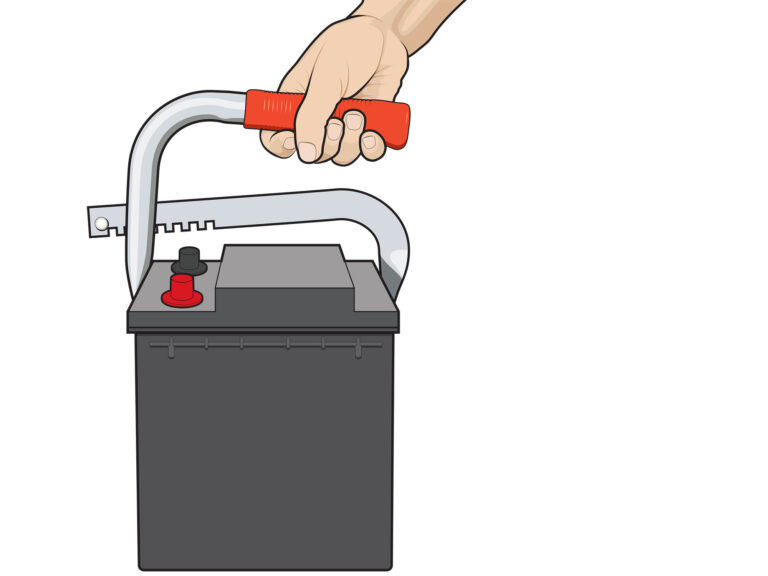
Inspecting Your Boat’s Finish
Engineer and composites expert Rick Strand is president at Impact Matrix Systems, Hampstead, New Hampshire. He has worked for Boston Whaler, ITW Plexus and TPI Composites and consulted for Baja, Sea Ray and others.
The finish on your boat is like skin. It can crack, peel, blister, change color, wrinkle or distort. In many cases, these are the symptoms of a deeper issue occurring somewhere below the finish layer. An owner needs to inspect his vessel’s finish on a regular basis, noting any changes that may have occurred.
Your boat may possess a gelcoat or paint finish. In this article, I will focus on gelcoat, usually a polyester resin formulated with pigments, ultraviolet light absorbers and other chemicals. Fairly brittle, gelcoat is the first material to be applied to the mold. It’s typically sprayed on and allowed to harden to a tacky solid before subsequent layers of fiberglass laminates are applied.
Let’s take a look at some of the visual warning signs that could be signaling a problem that might be more than skin deep.
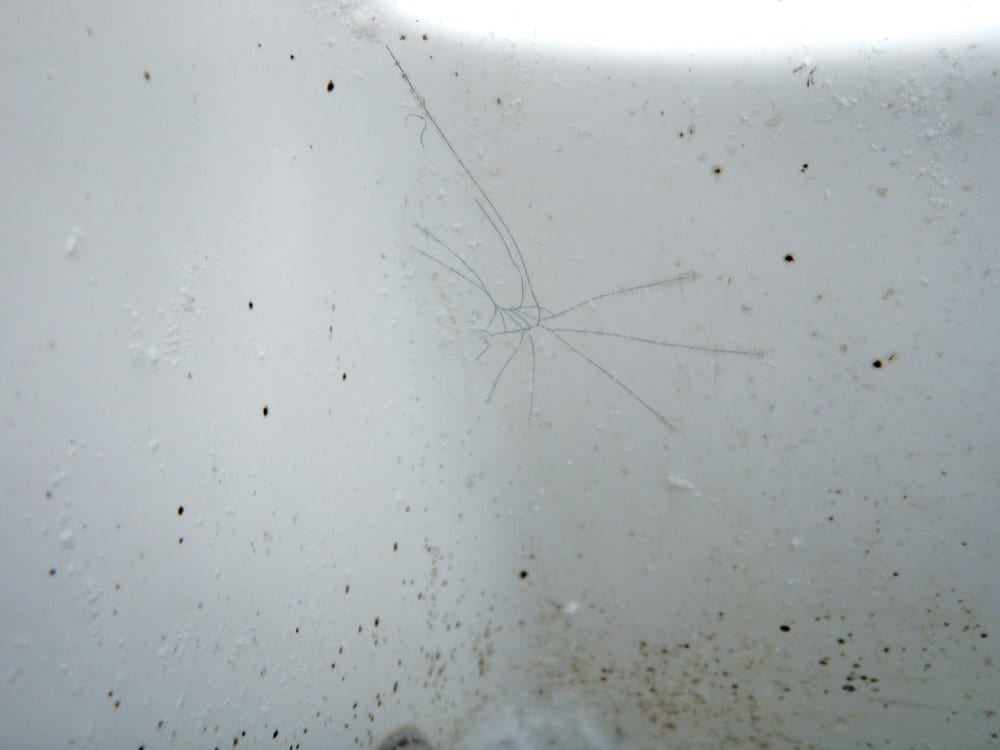
Inspecting Your Boat’s Finish
What: Cracks radiating from a single point
Where: Point of impact, above or below waterline
Why: Local impact
Severity: Low
Fix: Simple grind and fill; stop dropping things! Boating Magazine
Star Cracks
What: Cracks radiating from a single point
Where: Point of impact, above or below waterline
Why: Local impact
Severity: Low
Fix: Simple grind and fill; stop dropping things!
Star-shape cracks are indicative of a local impact. Dropping a heavy fishing weight in the cockpit or hitting a small piece of flotsam might cause them. In most cases, star cracks won’t grow and shouldn’t raise concern about larger structural problems.
When cracking is indicative of a larger issue, the shape, size and direction of cracks can provide a good initial list of possible causes. If a large crack (more than a couple of inches in length) appears, it may be attributable to a structural issue. The larger or longer the crack, the more concern the owner should have. Very long cracks demand near-immediate attention. Some causes of other types of cracks — besides or in conjunction with beating on a boat — include improper laminate thickness or resin application (“wet out”), improperly cured resin and even bad design.
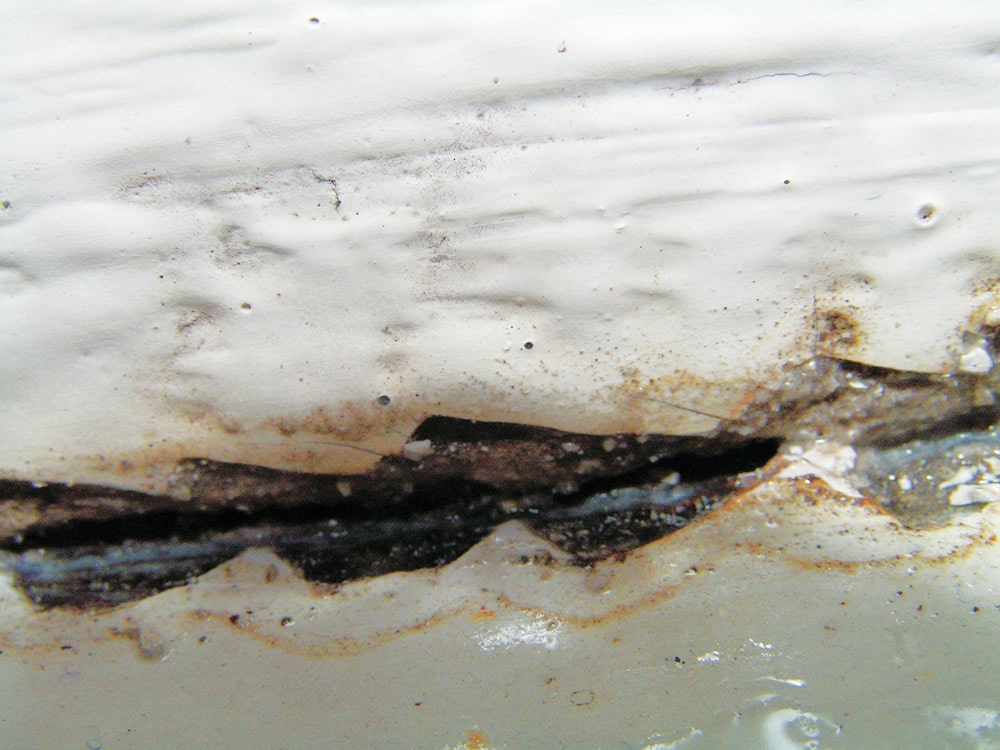
Inspecting Your Boat’s Finish
What: Water-soaked core between fiberglass skins
Where: Hull, deck, topsides — global
Why: Improper build or accessory installation
Severity: High
Fix: Costly rebuilding and recoring Boating Magazine
Leakage/Wet Core
What: Water-soaked core between fiberglass skins
Where: Hull, deck, topsides — global
Why: Improper build or accessory installation
Severity: High
Fix: Costly rebuilding and recoring
This type of construction is common in light, fast boats. Core materials could be cork, balsa, PVC or urethane foam and various honeycomb materials.
I have seen water leak into cores for reasons including: bad isolation of the core at through-hull fittings and portlights; screws penetrating from the interior installation; and fasteners that are not properly sealed. Wet core can be detected using a $400 moisture meter, a small investment compared with the cost of your boat.
Wet core often reveals itself by inducing distortion. This can be seen in the flatness of the gelcoat finish and/or as a rippled appearance. Dark color can contribute to the distortion. A dark hull’s temperature may reach 210 degrees F in high summer. A white hull might hit only 160 F. Wet core is soft, and the heat makes it softer. The shrinkage stresses that naturally occur in the skin pull and push on the core and result in distortion. If you own a cored vessel, look for this type of change in the finish.
Discoloration coming from fittings is another sign that water absorption could occur. Wet core may also freeze, resulting in cracking caused by venting or expansion.
In the photo above, the laminate cracked along a hard spot created by a stiffener, but was exacerbated by the soft core, which is clearly indicated by the brown liquid in the crack.
All of these telltale signs in the finish could lead to expensive repair bills. Know what you are buying. Do a bit of digging into how the vessel is constructed. Many marine surveyors can find these problems, but sometimes they are very subtle and require an expert eye to spot. Samples can be taken and professionally analyzed. Moisture meters, ultrasound and core samples represent cheap insurance in making sure that your purchase will be a good one.
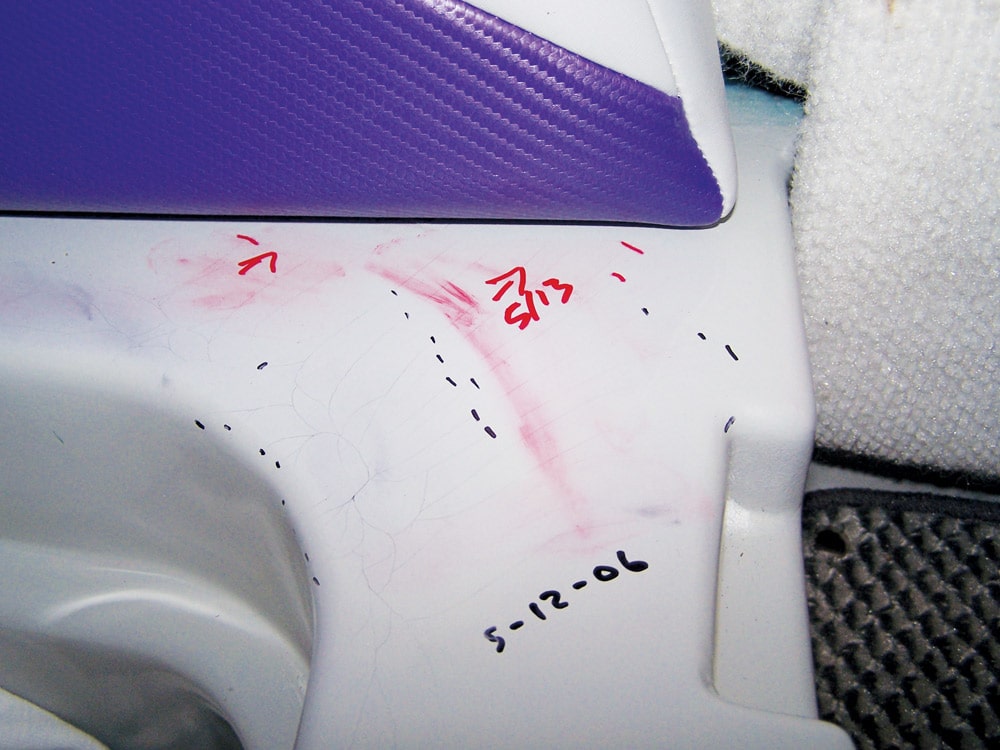
Inspecting Your Boat’s Finish
What: Linear or chip-ridden cracks
Where: Transitions in plane or shape of a part
Why: Load paths interrupted
Severity: Medium to high
Fix: Generally not repairable without rebuilding Boating Magazine
Design Flaw Cracks
What: Linear or chip-ridden cracks
Where: Transitions in plane or shape of a part
Why: Load paths interrupted
Severity: Medium to high
Fix: Generally not repairable without rebuilding
Parts with sharp corners or large shape transitions are more susceptible to cracking. Cracks are most common on decks and internal vessel structure, and the forces responsible for the crack development usually run 90 degrees to the crack direction. Remember that fiberglass composites are fairly damage-tolerant, so a crack doesn’t necessarily mean that a catastrophic failure is imminent.
If the parts were made of metal, on the other hand, once a crack appears, larger failure could occur fairly soon. This also means that you can monitor smaller cracks in a composite structure for growth. A simple pencil mark made at the ends of the crack will enable monitoring of its growth over time.
The cracks seen above are located on the internal structure of a stringer/liner system. It’s not uncommon to find boats where compromises have been made while shaping the structure to include amenities. In other cases the design is just plain bad.
The forces traveling along this structural component take an abrupt turn around a corner. The radius on the left should have been larger, which would have helped allow the stresses to dissipate. The sharp corner on the right is just plain wrong: There is absolutely nowhere for the force on the structure to go.
Radiused, rounded or sloped inside corners generally result in higher structural integrity. These cracks grew on successive days of on-water testing, as the marks show.
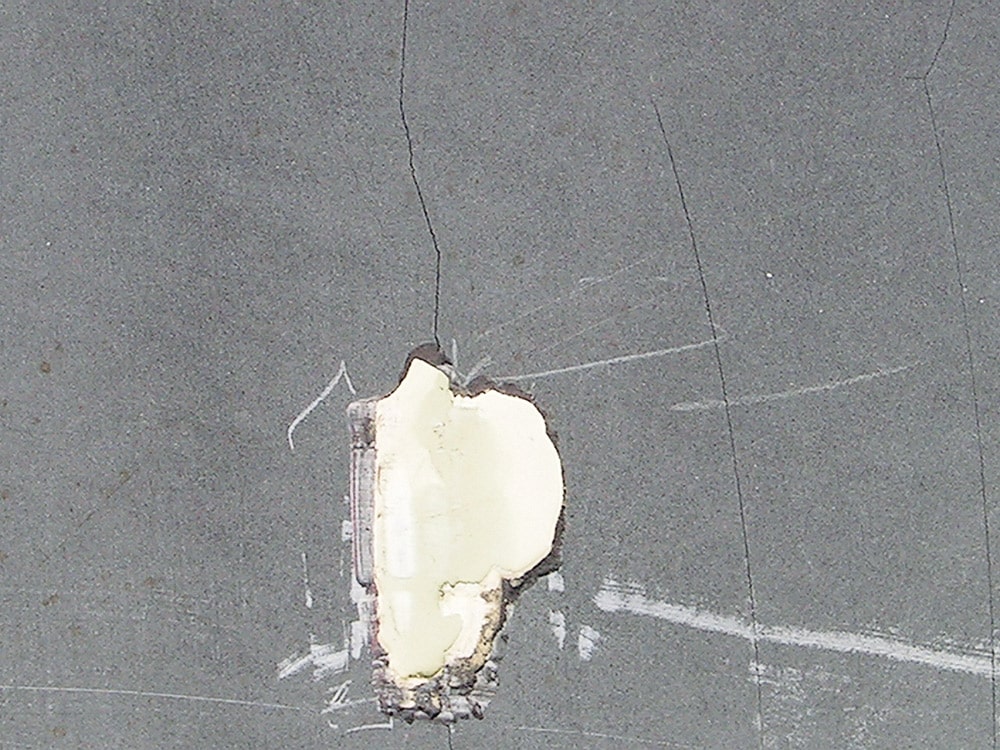
Inspecting Your Boat’s Finish
What: Separation of parts; cracks through hull shell
Where: Stringer/bulkhead/transom attachment
Why: Poor workmanship or quality control
Severity: High
Fix: Reapply tabbing and/or add ‘glass to hull bottom Boating Magazine
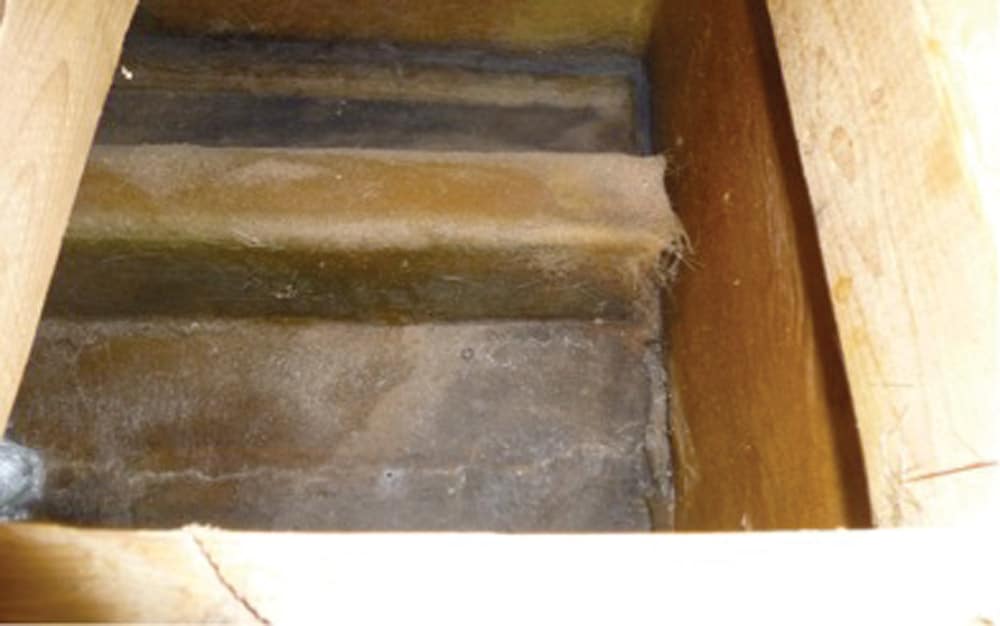
Inspecting Your Boat’s Finish
The stiffener, the square-sectioned part on the left, should have been laminated to the plywood frame it intersects. Also, some laminate was missing from the original design, making it even more flexible in this location. Boating Magazine
Cracking Due To Shoddy Construction (images #5 & 6)
What: Separation of parts; cracks through hull shell
Where: Stringer/bulkhead/transom attachment
Why: Poor workmanship or quality control
Severity: High
Fix: Reapply tabbing and/or add ‘glass to hull bottom
The image above is a photograph of a boat’s bottom. The gray field is the bottom paint and the white area in the center is a chipped out section of the fiberglass hull. The chip blew out of the laminate because the stringers inside the boat were not robustly laminated and broke loose from the hull as the boat moved through the water.
Know that about 40 percent aft of the bow is typically the location of some of the higher-slamming forces acting on a powerboat hull. The above images show damage to a vessel that would be classified as very near to a catastrophic failure of the hull shell. It took nearly 20 years for this problem to develop to a dangerous point. The exterior of the hull shell showed only a very short crack through all the layers of bottom paint. There were several things going on.
The stiffener, the square-sectioned part on the left in the image, should have been laminated to the plywood frame it intersects but was not. Instead, the two were simply butted together. This caused more movement than should have existed had proper lamination techniques been used. In addition, some laminate was missing from the original design, making the shell even more flexible in this location. Whether this was due to cost-cutting or the lamination crew’s failure to do the job as specified cannot be determined. Finally, the quality of the laminate was poor, with both dry fiber and trapped air present, as seen through the core sample taken through the crack. Be sure to look for wide tabbing or fabric overlapping mating surfaces when inspecting a boat. Also, you can’t be expected to take core samples like I do, but do look for dry spots by keeping an eye out for white areas, indicating cloth not wet with enough resin.
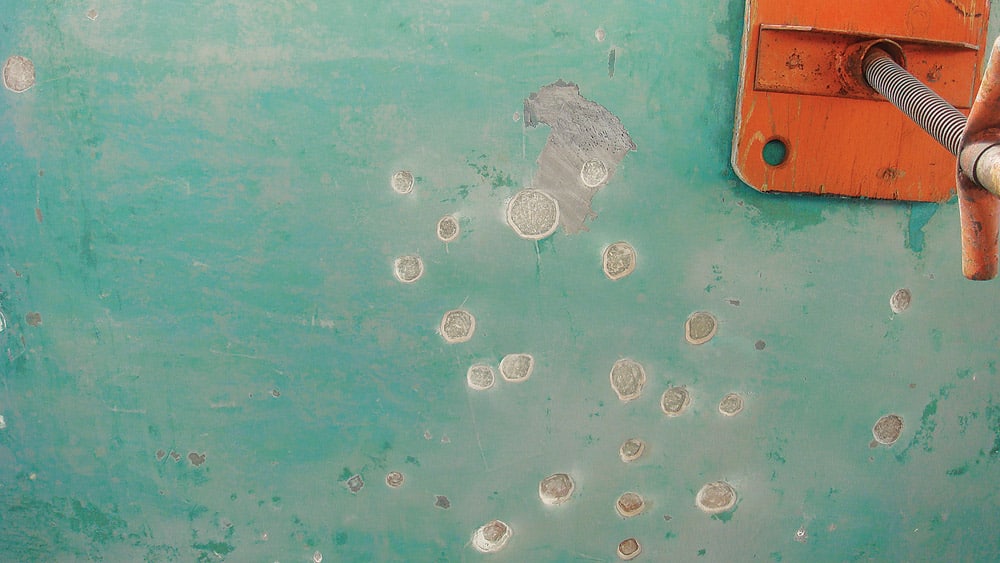
Inspecting Your Boat’s Finish
What: Bumps on surface of the fiberglass
Where: Mostly the hull below the waterline
Why: Low-quality resin, gelcoat or laminate
Severity: Low to medium
Fix: Costly and time-consuming grinding and recoating Boating Magazine
Blistering
What: Bumps on surface of the fiberglass
Where: Mostly the hull below the waterline
Why: Low-quality resin, gelcoat or laminate
Severity: Low to medium
Fix: Costly and time-consuming grinding and recoating
Blisters are bumps in the finish, shown above after being ground off. Blister size and location reveal much about the cause of the underlying problem. In most cases, blisters develop due to the eventual absorption of water into the boat’s hull shell or deck laminates.
Very small blisters (less than one-eighth inch in diameter) usually have a source close to the surface. Larger blisters (one-quarter to one inch) normally have a source deeper within. Excreted brown fluid may also be seen, especially if the blister is punctured and pressed. In most cases, blisters do not lead to any structural problem. They do hint at the use of lower-performance materials and/or problems with the laminate’s quality.
Several types of polyester are used to make gelcoat. Less-expensive polyesters can hydrolyze after long-term exposure to moisture. In this process, the chemical chains that make up the hardened resin break.
Back in the early ’80s Everett Pearson (of Tillotson-Pearson) and Interplastic Corp. collaborated to solve this problem. I performed all the testing and dissection. We discovered that, if a vinylester resin was used immediately behind the gelcoat, blistering wouldn’t occur. This was only true if the vinylester layer was of sufficient thickness and the gelcoat was an “NPG isophthalic” polyester.
Most boatbuilders after the early ’90s have used this technique to build blister-free boats, but many still opt for lower-cost systems that run the risk of blistering. My advice: Make sure you’re getting a hull and deck made with a vinylester “skin coat” (first layer behind the gelcoat). The repair of blistered locations on hulls can run to $1,000 per foot.
It is not just the gelcoat and skin coat that count, but also the quality of the laminates behind them. Fibers must be completely wet out with resin. Air bubbles need to be rolled out. Both trapped air and dry fiber can be a source of blisters. This is even true of vessels with a vinylester skin coat.
DIY
If your boat’s manufacturer recommends not keeping your boat in the water (yes, some actually state that), consider Interlux’s InterProtect system, a two-part epoxy developed to prevent “boat pox.” Available to boaters, it’s also the first choice of many pros when preventing or repairing blisters is the order of the day. yachtpaint.com
Suggested Reading:
How To Repair Gelcoat
How To Refinish Your Boat’s Bottom





